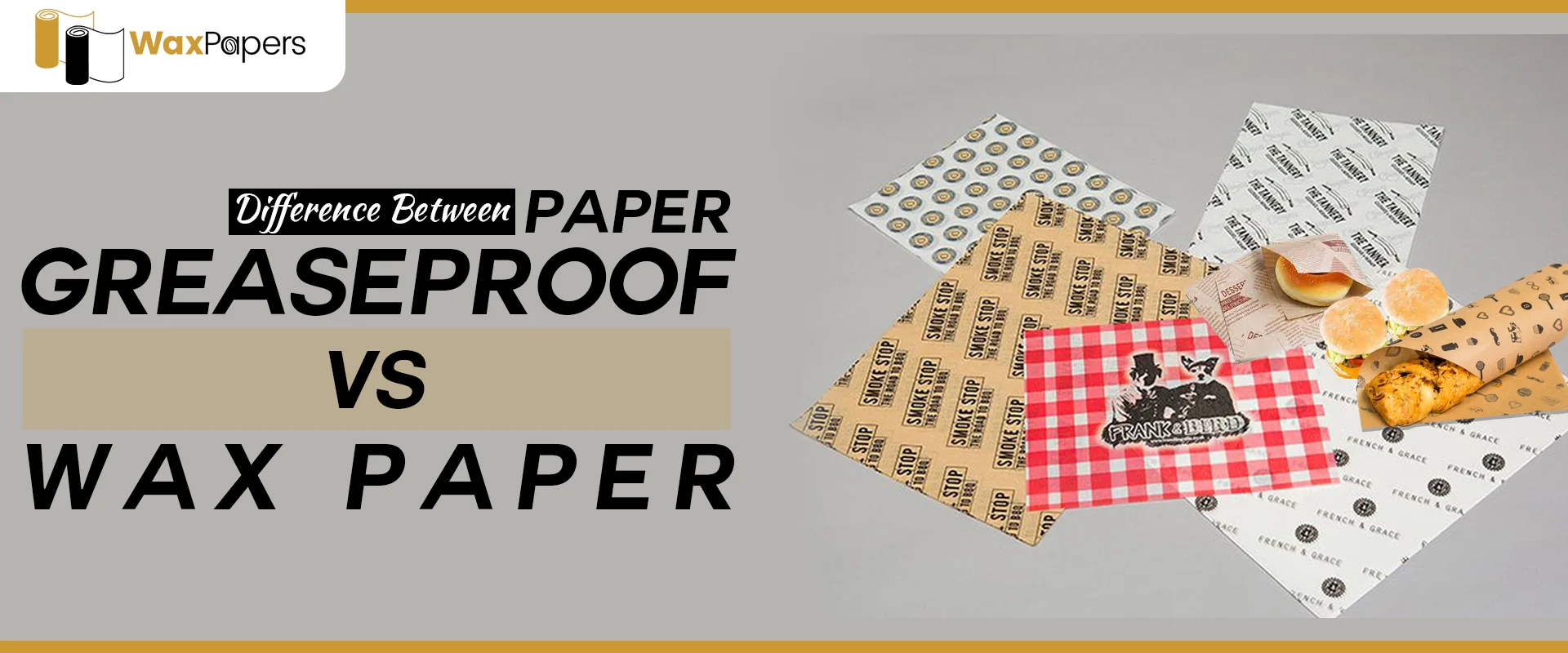Difference Between Greaseproof paper vs Wax paper

Most of the time people know about greaseproof paper and wax paper for the purpose of cooking and baking but these types of paper can significantly impact the outcome of your culinary creations. Both are interchangeably paper but they have specific characteristics that are best suited for different kitchen tasks.
Greaseproof paper is a popular choice for cooking and food packaging that is resistant to oil and grease. Wax paper is a type of paper that has been infused with wax. Usually made from paraffin, soybean, or beeswax. Its wax makes wax paper non-stick and greaseproof.
In this comprehensive guide, waxpaper.net explains the key differences between greaseproof paper and wax paper and sheds light on their unique properties, applications, and when to use each.
Greaseproof Paper
Greaseproof paper is specifically designed to resist the penetration of grease and oil making its ideal choice for lining baking trays and wrapping greasy or oily foods. Their grease resistance property undergoes special treatment during the manufacturing of premium food for special customers. Greaseproof paper resists oily substances to maintain the integrity of baked items and prevent them from sticking to the surface.
Benefits of Greaseproof Paper
There are a lot of benefits but we are here to explain the universal benefits that help to choose the Greaseproof paper vs wax paper.
- Grease Resistance – The main purpose of this paper is to resist greasy and oily items. This paper is perfect for wrapping fatty foods like cheese, bacon, or buttery pastries without the risk of leakage.
- Heat Resistance – Greaseproof paper is a heat-resistant paper that holds at high temperatures without burning or catching fire. This property makes it suitable for lining baking trays and oven racks during baking.
- Parchment-like Texture – This paper often has a parchment-like texture which enhances its non-stick properties and makes it easy to handle when wrapping or lining baking pans.
Common Uses of Greaseproof Paper
- The common use of greaseproof paper for baking purposes is to line baking trays and pans to prevent sticking.
- This paper facilitates easy cleanup and keeps the taste safe and delicious.
- It is used for wrapping sandwiches, snacks, and baked items to keep them fresh and prevent grease.
Wax Paper
It is a special type of paper that is made from paraffin, soybean, or beeswax material. Typically the main function of this paper is moisture-resistant and non-stick. Wax paper is mainly oil and grease which is unsuitable for use in baking or cooking applications where grease resistance is essential. Wax paper is primarily used for wrapping non-greasy food that lining to surfaces where sticking is a concern.
Benefits of Wax paper
- Moisture Resistance – Wax paper is moisture-resistant and is suitable for wrapping foods with high moisture content such as sandwiches, cookies, and candies. High moisture may spoil your food so, wax paper is important to protect your food.
- Non-Stick Surface – Their non-stick property always prevents foods from sticking and facilitating easy release. The wax coating makes the surface non-stick and water-resistant.
- Translucent Appearance – Wax paper often has a translucent appearance due to its thin coating of wax and allows the users to see the contents of wrapped items without unwrapping them.
Common Uses of Wax Paper
- There are many common uses but a lot but it is commonly used to wrap sandwiches, baked items, and snacks to keep them fresh and prevent them from drying out.
- Their non-stick surface provides surface protection and prevents food from sticking during food preparation
- It is suitable for non-heat applications like wrapping food, lining dishes, or as a moisture-resistant surface.
Key Differences of Greaseproof paper vs wax paper
There are many key differences but here we explain only some difference that helps to make the decision which one is best for your business.
- Heat Resistance – Greaseproof paper is a heat-resistant paper that holds at high temperatures and can be used in various cooking applications on the other hand wax paper is not suitable for baking or exposure to high temperatures.
- Coating – Coating is the main theme of these papers that creates a difference between these types of paper. Greaseproof paper is treated with substances like starch and wax paper has a wax coating that provides a non-stick surface.
- Applications- Greaseproof paper is commonly used for cooking, food packaging, and separating baked goods and wax paper is more suitable for non-heat applications like wrapping food or lining dishes.
Conclusion
At the bottom lines, according to waxpaper.net greaseproof paper and wax paper share some similarities such as their non-stick properties. They serve different purposes in the kitchen due to their particular characteristics.
Greaseproof paper stands out in resisting grease and oil. This is ideal for baking and wrapping oily foods. Wax paper is precious for its moisture resistance and non-stick surface. This id perfect for wrapping non-greasy foods and lining surfaces.


